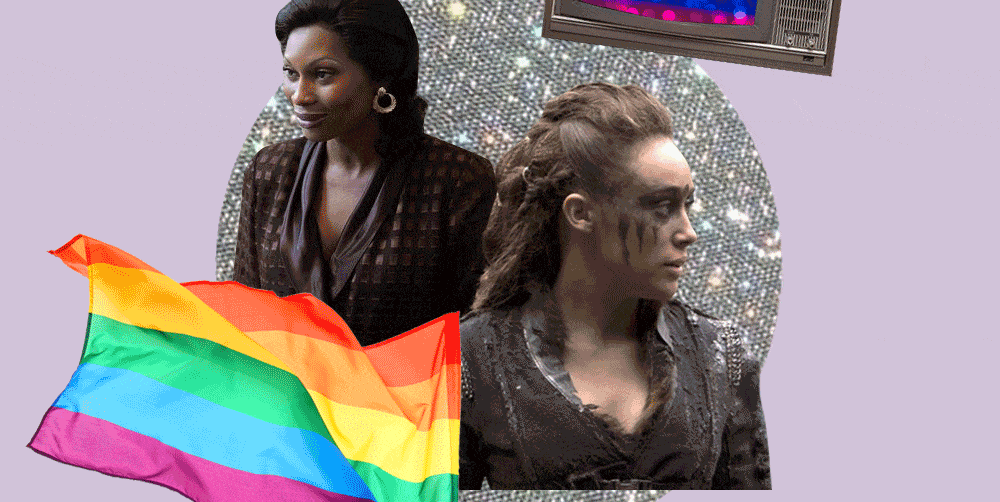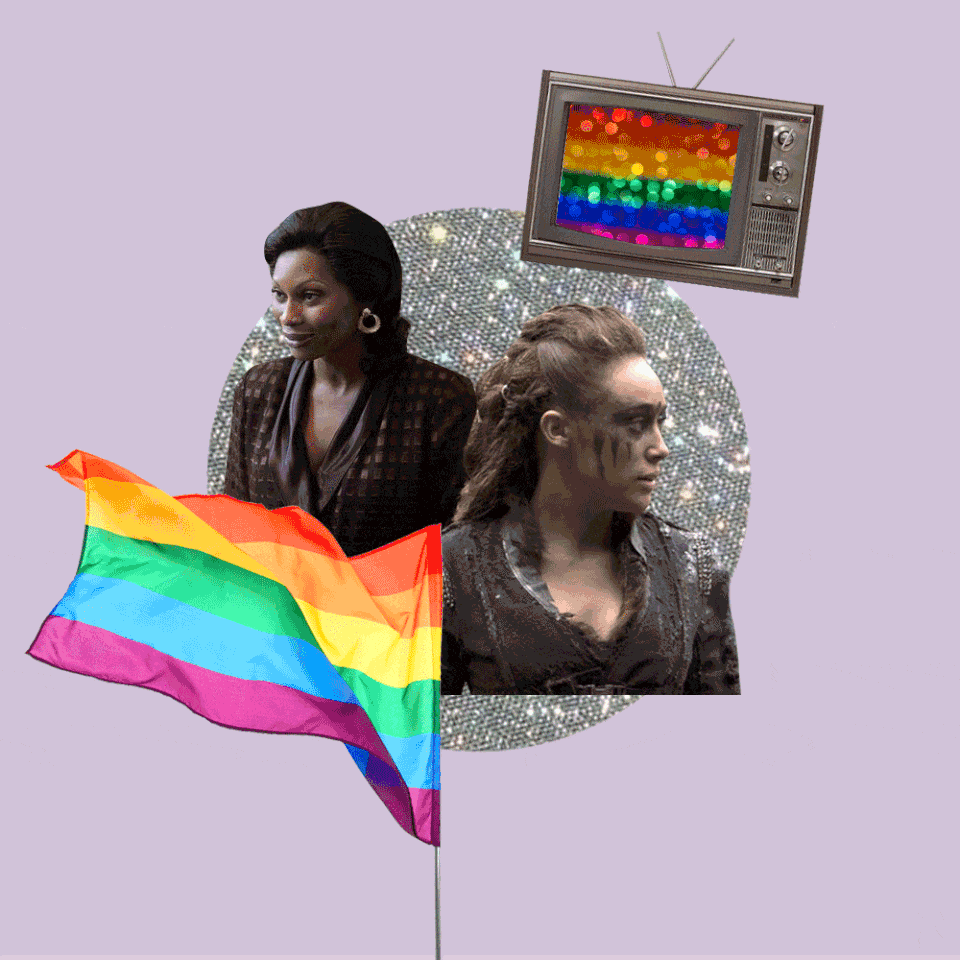Queer, female-led series are being cancelled, so where does that leave us?

There is a certain level of collective distrust that comes with enjoying a new series, thanks to the advent of streaming and the huge catalogues of titles that channels now hold in their arsenal. We're all too prepared for our favourite shows to simply disappear, be un-renewed, cancelled; a happy little entertainment blip that's never coming back.
Yet, for certain groups the threat of cancellation looms far larger than for others, and unsurprisingly, shows with diverse casts and queer, female-leads seem to more often be abandoned than their straight, male counterparts. Last year, I Am Not Okay With This, The 100, High Fidelity, The Good Place, Stumptown, The Society and Atypical were all cancelled one after the other, followed by One Day at a Time and Everything Sucks, all of which feature queer characters in prominent roles and stand up for representation. The channels in charge cited the impact of coronavirus as the cause.
If that wasn't enough, when much-loved wrestling comedy show GLOW - a show with a high proportion of queer, female and non-white characters - was also cancelled right before filming was due to start on its final series, news that Emily in Paris had just been renewed for a second season was announced that the same week. With its minimal representation of the LGBTQ+ community and people of colour, for many, it felt like rubbing salt in the wound.
Streaming sites and production companies almost always cite budget as a reason for a show's cancellation. But the fact that a multitude of TV follow-ups are often cancelled within days of others being renewed tells us that the budget is there, these companies are just being selective about where they put it.
NO BECAUSE NETFLIX HATES LESBIANS THEY WERE MY BIGGEST LOSSpic.twitter.com/0W1wAkmwEO
— soft lesbian squad ✿ (@love_sunniva) September 25, 2021
ABC cancelled Stumptown because of COVID but I assume they’ve got all the money in the world to keep the Bachelor franchise afloat 😑
— Nic (@CloneNic) September 17, 2020
i was done with #the100 when they went all bury-your-gays with Lexa and i'm so glad i didn't waste any more energy on that show
they never learn, do they?— caroline with an e (@theraventravels) September 10, 2020
"There's a lot more nuance to the recent burst of cancellations than simple cause and effect," explains Raina Deerwater, Entertainment Research & Analysis Manager at GLAAD (a leading LGBTQ+ Advocacy organisation) who recently published their extensive Where We Are on TV report, looking into LGBTQ+ representation on our screens.
"Over the past handful of years, television has got more diverse, in terms of LGBTQ+ representation. Also in the same handful of years, the landscape of television has drastically changed. More and more shows are being made, and it’s becoming harder for a series to rise to a level where it's consumed by a large number of people. So, while the progress grows, and more shows with LGBTQ+ people and women are at the helm, they are being made in this era where it is rare for a show to get a third season; where miniseries are in vogue; and where an incredible show can fly under the radar."
As Raina points out, we're a long way from where we were. As a young bisexual girl growing up in the UK, I watched as Jane Sibbett's character Carol Willick was mocked for her sexuality on Friends, while the relationship of Modern Family's Cam and Mitch got more aggressively dysfunctional by the episode. Were I to grow up these days, I'd have Brooklyn 99's Rosa Diaz and Sex Education's Adam, Ola and many others. And yet, there's still a sense of insecurity about the current levels of representation.

For some, the problem centres around how much support these shows are given. Take Netflix's Sex Education; the show is heavily promoted, written about in the press and talked about by fans on social media, all of which contribute to it being one of the most popular series on the streamer. But if we suddenly all stopped tweeting about and streaming it, would the knock-on effects be disastrous? If LGBTQ+ content is being created, is the onus then on us to keep watching and engaging with it in order to keep it going, or should it be the case that the sheer importance of representation is why a channel keeps these shows on air?
"With the exception of last year (which was an outlier due to COVID-related production slowdowns), the number of LGBTQ+ characters on TV continues to increase," Raina says. "However, when a show that has exceptional representation, such as Pose, with a core cast of trans women of colour, comes to an end, it is worrying that nothing will come to fill its place.
"There is a lot more to the trajectory of representation than whether something is getting better or worse, it’s a matter of needing to keep trying. Every time a diverse and groundbreaking show ends, the industry needs to grow two in its place, like a hydra of sorts.
"Currently, there is a cultural push for better representation," she continues. "And that push is making these shows get green lit... We need to push for more series that show underrepresented members of the community; shows with trans characters that aren’t rooted in tragedy, asexual characters, intersex characters, characters living with HIV, queer disabled characters, more stories of queer characters of colour. Every type of queer kid should be able to see themselves on television. Every time a show ends that showcases these characters, another needs to come up to take its place."
"It's all well and good applauding the streamers for making these shows, but it means very little if they'll just as quickly cancel them."
So, where does that leave us? If the next generation is to grow up with the kind of representation we're only now starting to see (had things been different, perhaps my little queer support network would have found each other long before our late twenties), we've got to care just as much about these shows not being cancelled as we do making them in the first place. It's all well and good applauding the streamers for making them, but it means very little if they'll just as quickly cancel them.
It's essentially a version of the "Bury Your Gays" trope (sometimes referred to as "Dead Lesbian Syndrome"), which suggests that the entertainment world perceives queer characters as expendable in a way that straight characters aren't, and is more willing to kill them off. The CW series The 100 is an example of the trope in action: fan favourite Lexa (Alycia Debnam Carey) was killed off in season 3 of the post-apocalyptic science fiction series, with Deadline reporting that showrunners were just looking to "amp the show’s drama". However, the death prompted a huge backlash from fans, who felt that killing off the series' most iconic lesbian character for a cursory bit of drama illustrated the problem perfectly; queer characters are disposable. But, looking more widely, it's not just about the characters being killed off in the shows, it's about the shows themselves meeting an untimely end.
"To put it crassly, the networks and streamers need to put their money where their mouth is," Raina explains. "So many of these shows are cancelled before they are given a chance to succeed. It is often more about which shows get promoted than which shows get made... It's no longer just enough to make a show, they have to fully promote it, advertise it and stand behind it."
Cosmopolitan UK has reached out to Netflix and The CW for comment.
Follow Daniella on Instagram.
You Might Also Like

